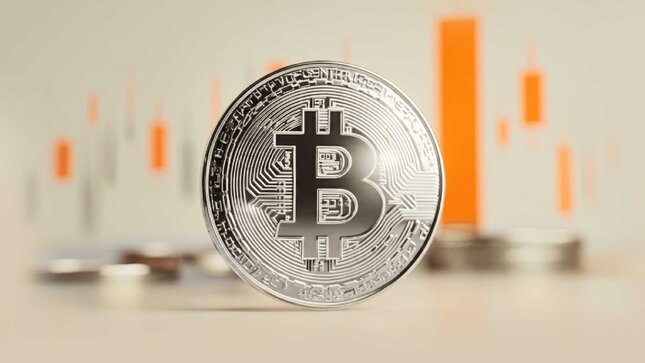In n today’s volatile geopolitical and economic climate, the words of a president can be just as powerful as policy itself. Markets no longer move solely in response to legislative action or economic indicators—they respond instantly to tone, timing, and messaging.
Under President Trump, tariff announcements and assertive rhetoric have repeatedly triggered market swings, exposing the fragility of investor confidence in an age where communication is strategy.
This article examines how presidential language influences market stability, reshapes expectations, and transforms investment behavior, turning every statement into a potential market-moving event.
Strategic realignment or economic disruption?
- Recalibrating global trade
In an era characterized by unprecedented political influence over global trade dynamics, the recent decision by President Trump to impose a 90-day tariff freeze, while setting a minimum tariff limit of 10% for all countries except China, serves as a stark reminder of the potent impact political decisions can wield over financial markets. This bold move, part of a broader trade strategy aimed at renegotiating more favorable terms for the United States, has not only highlighted the significant sway that governmental actions hold but also the delicate balance that must be maintained to ensure market stability.
- The strategic objective
The backdrop of these tariff adjustments lies within a broader effort by the United States to recalibrate its position in the global trade architecture. Driven by the belief that existing trade agreements disproportionately disadvantage American interests, the Trump administration has pursued an aggressive strategy aimed at reshaping long-standing economic relationships. Central to this approach is the unilateral imposition of tariffs as both a punitive measure and a negotiating tool, particularly targeting countries that run significant trade surpluses with the U.S.
- China in focus. pressure, isolation, and leverage
China, as the world’s second-largest economy and the United States' foremost strategic competitor, has remained at the heart of the ongoing trade confrontation. By deliberately excluding China from the 90-day tariff freeze and sustaining elevated tariffs on Chinese imports—retaliatory in nature due to China’s own countermeasures—the U.S. is reinforcing its intention to maintain economic pressure until significant structural reforms and trade concessions are secured. In contrast, other trading partners have been granted temporary relief, albeit under the condition of a 10% minimum tariff. This dual-track approach appears to serve a dual purpose: diplomatically isolating China while simultaneously creating space for bilateral negotiations with other nations deemed more cooperative or strategically aligned.
- The economic costs of coercion
However, the use of tariffs as instruments of economic coercion carries substantial risks. Such policies often disrupt global supply chains, increase input costs for domestic industries, and provoke retaliatory actions that can escalate into broader trade wars. Moreover, the administration’s approach has been accompanied by a communication style that lacks predictability. President Trump's public statements are frequently impromptu, assertive, and open-ended, leaving room for wide interpretation.
- Markets demand clarity, not ambiguity
This uncertainty is deeply unsettling to financial markets, which prefer clarity, stability, and forward guidance. Investors, traders, and business leaders must make decisions based on expectations of future policy. When those expectations become clouded by inconsistent messaging or sudden shifts in direction, the result is an increase in risk premiums, heightened volatility, and a pullback in investment activity.
- Unintended consequences of strategic messaging
In this context, the issue is not merely the economic rationale behind the tariffs, but the manner in which the policy is articulated and executed. The combination of aggressive trade measures and inconsistent rhetoric introduces an additional layer of complexity, one that challenges market participants and injects instability into an already fragile global economic environment.
How language shapes risk perception and investment behavior
- The power of presidential language
The rhetoric employed by President Trump has emerged as a significant market-moving variable in its own right. Often described by observers as ‘arrogant,’ ‘provocative,’ or ‘unorthodox,’ the President’s language plays a pivotal role in shaping investor sentiment and influencing short-term market behavior.
Phrases such as “flexibility,” “negotiation,” and “case-by-case” may be intended to convey strategic adaptability, but in the context of global financial markets, they tend to introduce a high degree of interpretative ambiguity.
- Ambiguity fuels volatility
This ambiguity forces investors and traders to make assumptions about future policy direction in the absence of clearly defined parameters. In such an environment, markets become more sensitive to headlines and public statements, reacting sharply even to minor shifts in tone or phrasing. The result is a persistent elevation in volatility across asset classes—equities, bonds, currencies, and commodities alike.
- Behavioral economics at play
From a behavioral economics perspective, this uncertainty can significantly amplify market inefficiencies. Cognitive biases such as anchoring, herding behavior, and loss aversion become more pronounced when clear signals are absent. Traders may rush to reposition portfolios in anticipation of worst-case scenarios, while institutional investors may pull back from risk exposure due to the unpredictability of policy execution. This can lead to mispriced assets, dislocations in liquidity, and irrational market swings that deviate from fundamental economic indicators.
The erosion of investor confidence
Moreover, the erosion of confidence in the consistency and reliability of leadership communication undermines the foundational trust required for stable market function. Over time, this dynamic can discourage long-term investment, distort capital flows, and incentivize short-term, reactive behavior over strategic decision-making.
Rhetoric as a systemic risk
In short, while strong rhetoric may be leveraged for political posturing or negotiation tactics, its unintended consequences in the financial realm are far-reaching. The lack of disciplined, transparent communication—especially on matters with global economic implications—poses a systemic risk to market stability and investor confidence. Investors must, therefore, not only monitor policy itself but also assess the tone, consistency, and credibility of the rhetoric that accompanies it.
Learning from the past - when sudden policy shifts reshape global markets
- The Nixon shock: Ending Bretton Woods without warning
History offers critical insights into the consequences of abrupt and unilateral policy decisions—particularly when they are communicated without clarity or strategic foresight. One of the most striking examples is the Nixon Shock of 1971, when President Richard Nixon unexpectedly suspended the U.S. dollar’s convertibility into gold, effectively dismantling the post-World War II Bretton Woods system.
The announcement, made without prior consultation with international partners or economic stakeholders, sent shockwaves through global financial markets. It triggered widespread currency volatility, eroded trust in international monetary stability, and ushered in a prolonged era of monetary uncertainty that redefined the global economic landscape. The lesson: even necessary structural reforms can destabilize global systems if delivered without coordinated communication or transitional planning.
- Modern echoes: The rhetoric and reality of trade policy today
Much like Nixon’s abrupt decision in 1971, recent tariff announcements under the Trump administration—issued with little warning and often accompanied by provocative or ambiguous language—have destabilized investor expectations and fueled uncertainty.
These actions have reinforced a recurring pattern: when governments act without transparency or multilateral dialogue, market volatility is not only probable—it is inevitable. The consequences are not limited to pricing shifts but extend to erosion in market confidence, reallocation of capital, and distortion of investment planning horizons.
- The Smoot-Hawley tariff act: A historical cautionary tale
Another powerful historical parallel is the Smoot-Hawley Tariff Act of 1930, enacted during the early stages of the Great Depression. Aimed at shielding U.S. industries by significantly raising tariffs on over 20,000 imported goods, the policy provoked swift retaliation from key trade partners.
Global trade volumes plummeted, deepening the global economic crisis. While the Act was rooted in domestic economic protection, its lack of foresight regarding international consequences transformed it from a defensive measure into a trigger for broader economic decline.
This episode underscores the unintended consequences of protectionism—particularly when implemented during periods of macroeconomic vulnerability. It stands as a stark reminder that actions intended to secure national advantage can backfire when they disrupt the global balance and provoke retaliatory dynamics.
- The value of strategic foresight and global coordination
By reflecting on these episodes, we gain a clearer understanding of the risks associated with reactive, ideologically driven, or politically motivated policy-making. These examples demonstrate that even well-meaning interventions can misfire if they overlook:
- Global interdependencies,
- Investor psychology,
- Market timing,
- And the need for clear and consistent messaging.
Ultimately, these lessons affirm the enduring value of a measured, consultative, and strategically coherent approach to economic policy—one that favors transparency, fosters stability, and enhances investor confidence through credible, coordinated action.
The mind game of expectations - investing between security and growth
- Investing beyond the data as psychological anticipation
At its core, investing is not solely about reacting to data or analyzing fundamentals—it is about anticipating the future. It is a psychological discipline rooted in managing expectations, balancing the desire for security with the pursuit of growth. In today’s volatile macroeconomic landscape—shaped heavily by political decision-making and strategic ambiguity—this dynamic has become more pronounced than ever.
Markets are not driven purely by current events; they are moved by how investors perceive the next step. Every announcement, every shift in policy tone, and every unexpected geopolitical statement contributes to the formation—or erosion—of investor expectations. When a powerful policymaker such as President Trump issues statements that disrupt predictability, whether through the sudden imposition of tariffs or vague allusions to bilateral negotiations, it alters not just market pricing but the psychological anchors upon which investment decisions rest.
- The psychological battleground of modern investing
This dynamic reveals the true battleground of modern investing: the mind. Investors and traders are constantly weighing contradictory signals—political risk against economic opportunity, short-term noise against long-term vision.
They’re not just evaluating what is, but what might be. It is this psychological calculus, more than any spreadsheet or model, that determines how capital is allocated in times of uncertainty.
- Navigating the dichotomy of security vs. growth
Under uncertain conditions, investor behavior tends to split between two dominant archetypes:
- Security-seeking investors, influenced by rising risk aversion and policy unpredictability, retreat to traditional safe havens such as U.S. Treasuries, gold, the Swiss franc, or low-volatility dividend stocks. Their priority is capital preservation and minimizing downside exposure.
- Growth-focused investors, by contrast, actively seek opportunities obscured by short-term turbulence—such as undervalued equities, emerging market rebounds, or sectors poised to benefit from policy redirection (e.g., defense, infrastructure, domestic manufacturing).
Both perspectives are valid—but each requires a deep understanding of policy signaling, market psychology, and historical precedent.
The key lies in knowing when to pivot:
- When does uncertainty offer opportunity?
- When does bold rhetoric cross into genuine structural change?
- When is risk simply noise—and when is it systemic?
To answer these questions, investors must remain tuned not only to the content of policies, but to the intention behind them.
- Is the policy backed by institutional alignment and execution capacity?
- Or is it a tactical maneuver aimed at momentary leverage?
- Does the rhetoric suggest escalation—or resolution?
In this environment, expectation becomes both a compass and a shield. Those who can interpret the market’s shifting narrative—through the lens of psychology, history, and strategic communication—gain an edge in positioning effectively across asset classes.
Stability, strategy, and the psychology of markets
The modern investment landscape, particularly in periods of heightened geopolitical tension and policy unpredictability, is shaped not only by fundamentals but by the psychology of perception. As explored throughout this article, President Trump’s tariff decisions and his personalized negotiation rhetoric illustrate how government actions can destabilize expectations, reshape risk appetite, and ultimately move markets.
We’ve seen how:
- Policy ambiguity disrupts the mental models investors use to evaluate future value;
- Aggressive rhetoric, even when strategically deployed, increases volatility;
- Historical lessons reinforce the importance of structured, transparent policy;
- And how the real challenge for investors lies in navigating the mind game of expectations.
In this context, investors must refine their approach—not by merely reacting to headlines, but by understanding the deeper signals beneath them. This means interpreting political intent, assessing communication credibility, evaluating stakeholder alignment, and above all, staying adaptive.
Success in such an environment does not come from predicting the next tweet or tariff, but from mastering the art of expectation management—balancing caution with conviction, and positioning portfolios to withstand uncertainty while capitalizing on clarity when it emerges.
As history has shown, markets may bend under political pressure, but they are ultimately resilient. And for those who can read between the lines—seeing risk where others see chaos, and opportunity where others retreat—today’s turbulence can be tomorrow’s advantage.
CFDs are complex instruments and come with a high risk of losing money rapidly due to leverage. You should consider whether you understand how CFDs work and whether you can afford to take the high risk of losing your money. The Article/Information available on this website is for informational purposes only, you should not construe any such information or other material as investment advice or any other research recommendation. Nothing contained on this Article/ Information in this website constitutes a solicitation, recommendation, endorsement, or offer by LegacyFX and A.N. ALLNEW INVESTMENTS LIMITED in Cyprus or any affiliate Company, XE PRIME VENTURES LTD in Cayman Islands, AN All New Investments BY LLC in Belarus and AN All New Investments (VA) Ltd in Vanuatu to buy or sell any securities or other financial instruments in this or in in any other jurisdiction in which such solicitation or offer would be unlawful under the securities laws of such jurisdiction. LegacyFX and A.N. ALLNEW INVESTMENTS LIMITED in Cyprus or any affiliate Company, XE PRIME VENTURES LTD in Cayman Islands, AN All New Investments BY LLC in Belarus and AN All New Investments (VA) Ltd in Vanuatu are not liable for any possible claim for damages arising from any decision you make based on information or other Content made available to you through the website, but investors themselves assume the sole responsibility of evaluating the merits and risks associated with the use of any information or other Article/ Information on the website before making any decisions based on such information or other Article.
Editors’ Picks

AUD/USD struggles to reconquer the 0.6700 mark
The AUD/USD pair trades just below 0.6700 in the Asian session on Tuesday, trying to regain some ground after falling at the beginning of the week. The US Dollar benefited from a dismal mood, with a sell-off in tech shares leading an otherwise slow session.

USD/JPY stalls as Yentervention risk weighs
USD/JPY reversed course to open the final week of the trading year, falling back to the 156.00 region and paring off last week’s late burst of bullish momentum. General volatility is expected to widen during the last trading week of 2025, and follow into early 2026 as holiday-thinned market volumes wreak havoc on general market trends.

Gold holds above $4,300 after setting yet another record high
Spot Gold traded as high as $4,550 a troy ounce on Monday, fueled by persistent US Dollar weakness and a dismal mood. The XAU/USD pair was hit sharply by profit-taking during US trading hours and retreated towards $4,300, where buyers reappeared.

Ethereum: BitMine continues accumulation, begins staking ETH holdings
Ethereum treasury firm BitMine Immersion continued its ETH buying spree despite the seasonal holiday market slowdown. The company acquired 44,463 ETH last week, pushing its total holdings to 4.11 million ETH or 3.41% of Ethereum's circulating supply, according to a statement on Monday. That figure is over 50% lower than the amount it purchased the previous week.

Bitcoin Price Annual Forecast: BTC holds long-term bullish structure heading into 2026
Bitcoin (BTC) is wrapping up 2025 as one of its most eventful years, defined by unprecedented institutional participation, major regulatory developments, and extreme price volatility.
RECOMMENDED LESSONS
Making money in forex is easy if you know how the bankers trade!
I’m often mystified in my educational forex articles why so many traders struggle to make consistent money out of forex trading. The answer has more to do with what they don’t know than what they do know. After working in investment banks for 20 years many of which were as a Chief trader its second knowledge how to extract cash out of the market.
5 Forex News Events You Need To Know
In the fast moving world of currency markets where huge moves can seemingly come from nowhere, it is extremely important for new traders to learn about the various economic indicators and forex news events and releases that shape the markets. Indeed, quickly getting a handle on which data to look out for, what it means, and how to trade it can see new traders quickly become far more profitable and sets up the road to long term success.
Top 10 Chart Patterns Every Trader Should Know
Chart patterns are one of the most effective trading tools for a trader. They are pure price-action, and form on the basis of underlying buying and selling pressure. Chart patterns have a proven track-record, and traders use them to identify continuation or reversal signals, to open positions and identify price targets.
7 Ways to Avoid Forex Scams
The forex industry is recently seeing more and more scams. Here are 7 ways to avoid losing your money in such scams: Forex scams are becoming frequent. Michael Greenberg reports on luxurious expenses, including a submarine bought from the money taken from forex traders. Here’s another report of a forex fraud. So, how can we avoid falling in such forex scams?
What Are the 10 Fatal Mistakes Traders Make
Trading is exciting. Trading is hard. Trading is extremely hard. Some say that it takes more than 10,000 hours to master. Others believe that trading is the way to quick riches. They might be both wrong. What is important to know that no matter how experienced you are, mistakes will be part of the trading process.
The challenge: Timing the market and trader psychology
Successful trading often comes down to timing – entering and exiting trades at the right moments. Yet timing the market is notoriously difficult, largely because human psychology can derail even the best plans. Two powerful emotions in particular – fear and greed – tend to drive trading decisions off course.

